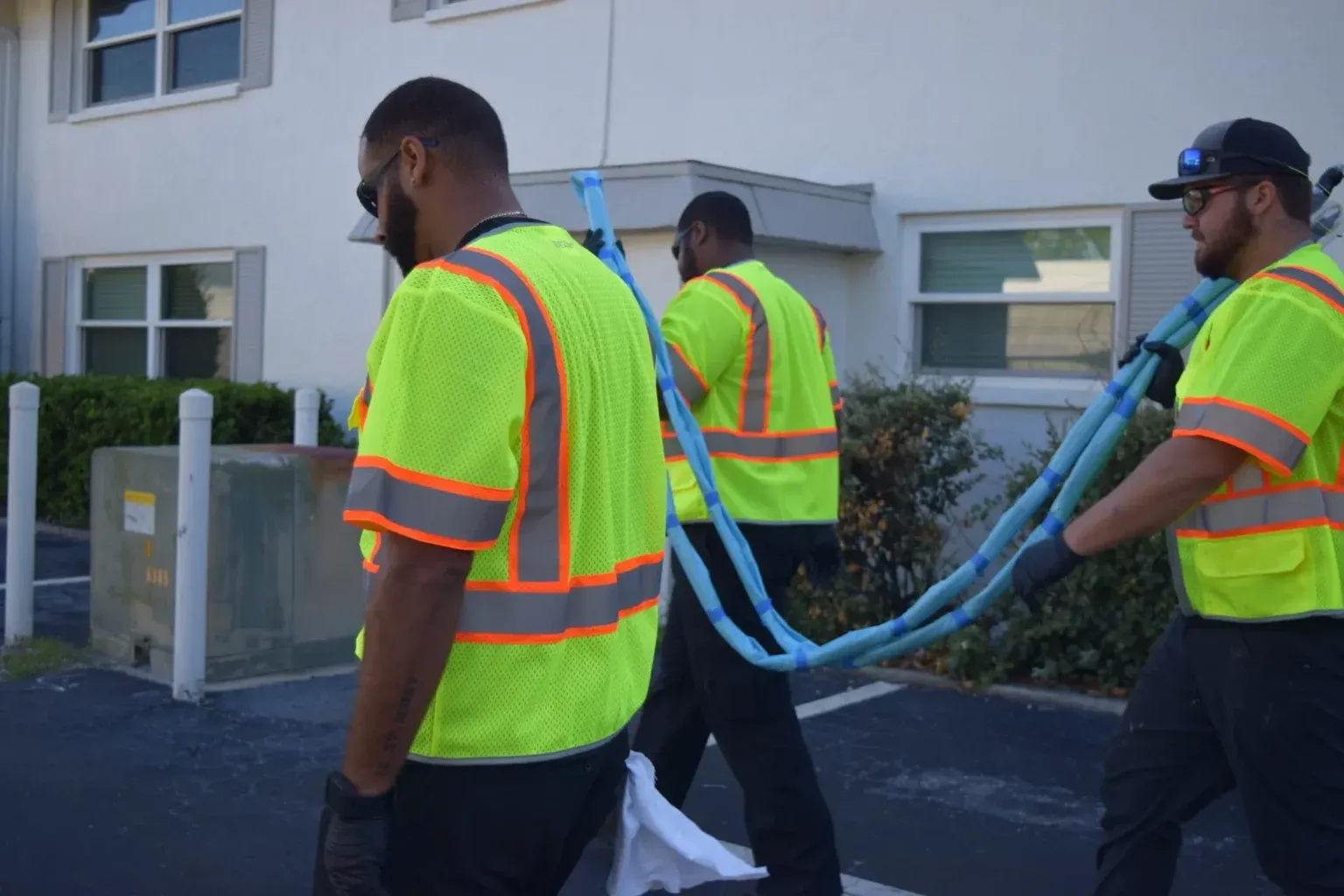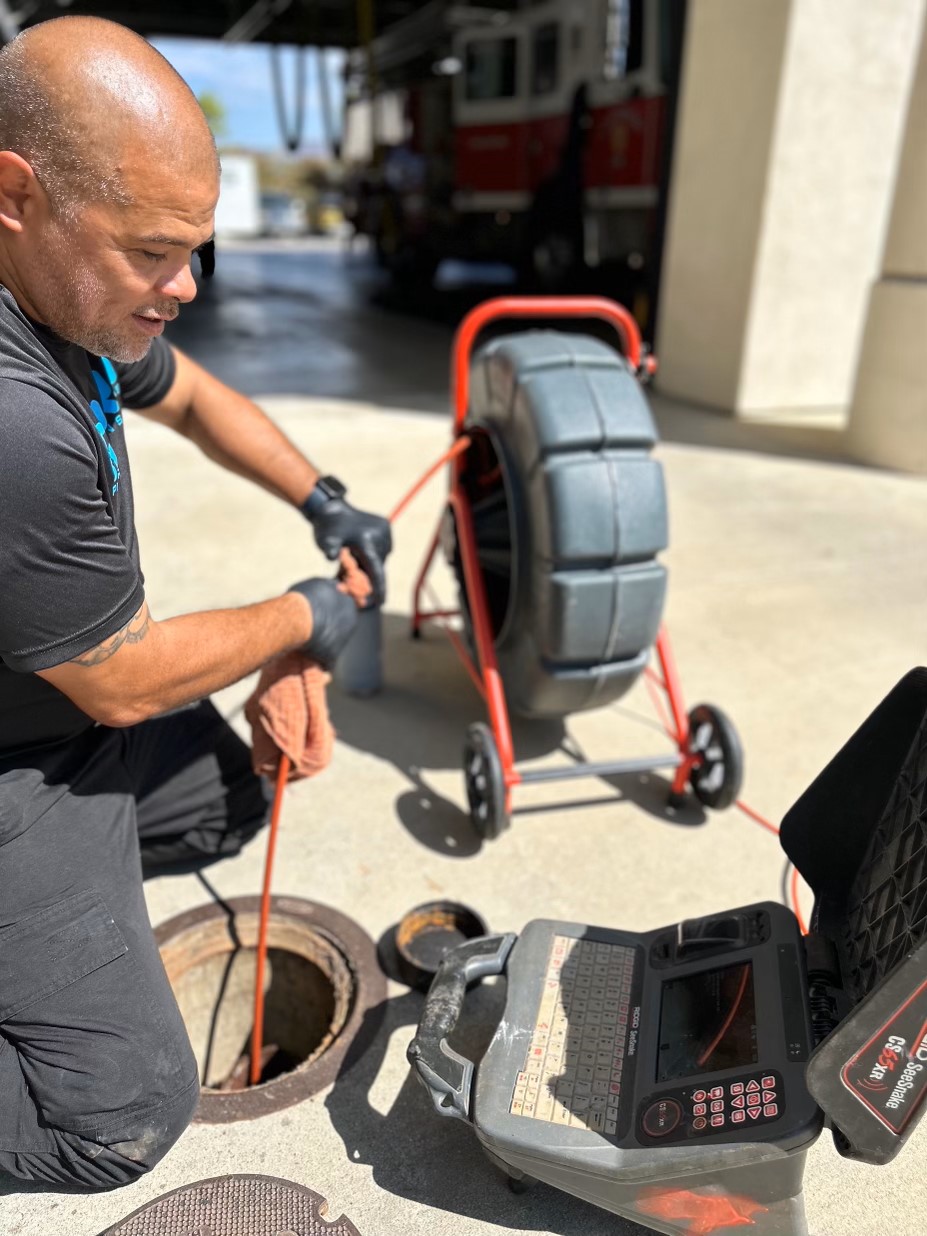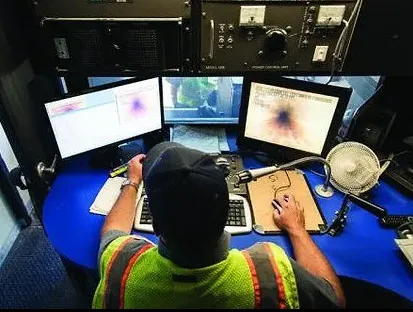Understanding Trenchless No-Dig Pipe Repair Technology
The innovation of trenchless no-dig pipe repair has revolutionized how we address subterranean pipeline maintenance and restoration. This cutting-edge method allows for the refurbishment or complete replacement of pipes with minimal disturbance to the ground above. Among the most prevalent techniques are cured-in-pace pipe (CIPP) lining, pipe bursting, and slip lining.
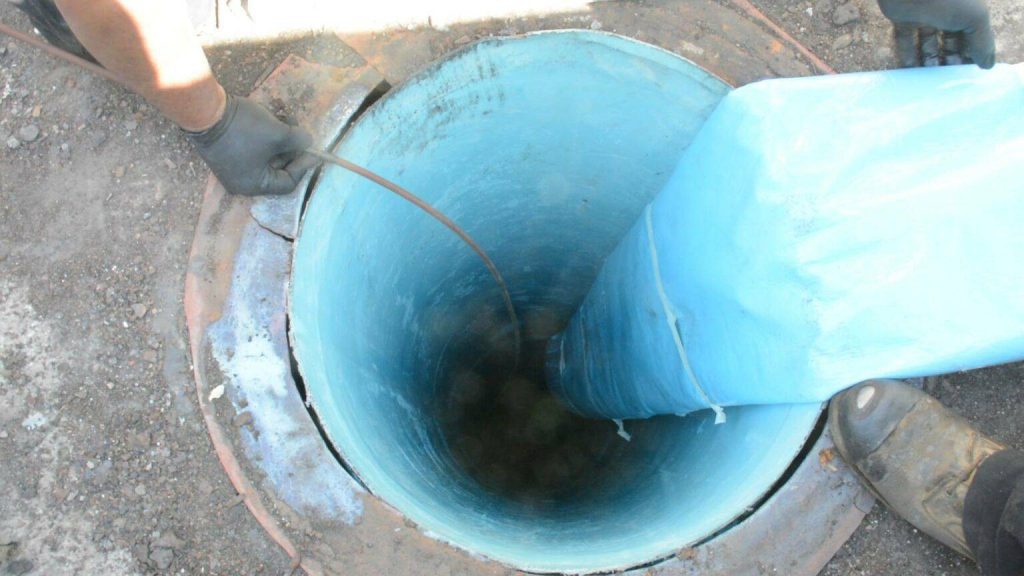
Consider CIPP lining, a process where a resin-soaked liner is introduced into the compromised pipe. It’s a favored approach for fixing sewer lines. The resin hardens, often with the aid of hot water, UV light, or steam, effectively creating a new pipe within the old one. This can be accomplished through modestly sized entry points, eliminating the need for extensive trenching.
Pipe bursting is another ingenious method, which involves breaking apart the old pipe while simultaneously pulling in a new one. A powerful bursting head shatters the existing pipe and paves the way for the new pipe to be installed in its place.
Slip lining, a more traditional technique, involves sliding a new pipe into the existing one and then filling the annular space with grout. While it’s primarily used to enhance structural stability, it’s not always suitable for comprehensive pipe repairs.
Other trenchless techniques, such as horizontal directional drilling (HDD) for new installations and robotic repairs, also fall under the umbrella of trenchless no-dig solutions.
These sophisticated methods necessitate advanced equipment and skilled technicians. The arsenal for these operations often includes CCTV for internal inspections, inversion equipment for CIPP, and robust bursting machines for pipe bursting, alongside the apparatus required for the insertion of liners in slip lining.
Trenchless no-dig pipe repair is a leap forward in infrastructure maintenance, offering a solution that safeguards the landscape, streamlines repair processes, and presents a more eco-friendly alternative to traditional excavation.
The Minimization of Landscape Disruption
Trenchless no-dig pipe repair is a better for the environment, significantly reducing the impact on landscapes compared to conventional excavation methods. This is a pivotal advantage for residential property owners who take pride in their verdant lawns and blooming gardens, as well as for urban areas where undisturbed pedestrian flow and business activities are paramount.
The old-school approach to pipe repair often meant digging extensive trenches, wreaking havoc on green spaces, and uprooting the natural and man-made elements of the landscape. The aftermath could lead to costly and lengthy restoration efforts, with some original features potentially lost forever.
In stark contrast, trenchless technology typically involves creating one or a few discreet access points. These are carefully chosen to minimize both visibility and impact. After the necessary repairs are made, these sites can be swiftly returned to their pre-repair condition, significantly diminishing the need for additional landscape restoration.
This method also spares hardscape features such as driveways and walkways from destruction, circumventing the hefty expenses and labor involved in rebuilding these structures. Furthermore, it mitigates the risk of inadvertently damaging other underground utilities during the excavation process.
Especially in densely populated areas, where space is at a premium and construction activities can have a pronounced effect, the ability to conduct subterranean repairs with minimal surface interference is invaluable. Trenchless no-dig pipe repair thus emerges as a method that not only preserves the visual and ecological aspects of our surroundings but also maintains public convenience and safety amid crucial infrastructural updates.
Cost-Effectiveness of Trenchless Pipe Repair
The financial savvy of trenchless pipe repair extends beyond its gentle touch on the landscape. Where traditional digging methods rack up considerable bills, from extensive labor to post-digging restorations, trenchless techniques offer a wallet-friendly alternative.
A key element in the cost savings of trenchless repair is the streamlined labor force. Advanced methods such as cured-in-place piping (CIPP) or pipe bursting enable a more compact team to accomplish the task swiftly, eclipsing the pace of conventional excavation crews. This expedited process equates to reduced labor expenses, often making up a hefty slice of the project’s budget.
Moreover, the scaled-down need for heavy equipment trims operational costs. Smaller machinery operates for fewer hours and sips less fuel, culminating in substantial savings throughout the repair timeline.
The hidden costs accompanying traditional repairs—think road closures, detours, and the interruption of local commerce—also inflate the final tally. Trenchless technology sidesteps most of these issues, sparing businesses from the financial blow of operational downtime.
Post-repair, property owners breathe a sigh of relief as restoration expenses plummet. With trenchless methods sparing the landscape, there’s considerably less to reconstruct, particularly when it comes to pricey features like driveways or patios.
While the upfront investment in trenchless repair may appear steep due to the specialized equipment and materials, the long-term view reveals a different story. When the dust settles, the cumulative savings on labor, operations, and restorations often paint a picture of a more budget-friendly approach.
In essence, the economic allure of trenchless pipe repair is woven from the threads of labor savings, diminished operational costs, and mitigated restoration expenses, presenting a compelling case for its adoption in both residential and commercial settings.
Environmental Advantages of Trenchless Repairs
Trenchless pipe repair’s environmental benefits complement its landscape and cost merits, showcasing its role in ecological conservation. This method’s precision and reduced surface impact confer multiple ecological pluses.
Foremost, trenchless repairs curtail soil upheaval. Where traditional digging might uproot and displace copious amounts of earth, necessitating transport or on-site management, trenchless techniques keep the soil’s composition and the local ecosystems undisturbed, thus shrinking the project’s environmental footprint.
The lighter reliance on heavy machinery also translates into environmental gains. With fewer engines running, emissions of greenhouse gases and other pollutants take a nosedive, a boon for urban locales where clean air is at a premium.
Trenchless technology’s accuracy also means existing greenery remains unscathed, which is crucial for maintaining biodiversity and preventing the soil erosion and runoff often seen with traditional excavation.
The durability of materials used in trenchless repairs, such as the epoxy resins in CIPP, ensures a long-lasting fix and less frequent need for interventions. This pipe within a pipe approach not only extends the life of the infrastructure but also reduces the potential for leaks, thereby diminishing environmental disturbances over time.
Moreover, this method circumvents the risk of contaminating the soil and local water tables with spills or leaks that could arise during excavation, safeguarding the integrity of the environment.
Finally, trenchless repairs play a part in water conservation. By addressing leaky pipes promptly and effectively, the technology helps to stem water loss, an essential consideration in regions grappling with water scarcity.
To sum up, the environmental perks of trenchless repairs are significant, from minimizing soil disruption and emissions to protecting ecosystems, ensuring durable repairs, preventing contamination, and aiding in water conservation. These factors collectively underscore the method’s growing appeal as an environmentally responsible choice.
Planning and Execution of Trenchless Repairs
The success of trenchless pipe repairs hinges on meticulous planning and precise execution, capitalizing on the advantages such as reduced environmental impact and preservation of the landscape. The process commences with an in-depth evaluation of the pipeline, utilizing video inspection tools to gain insights into the pipe’s condition, pinpoint damage, and guide the selection of an appropriate repair strategy.
Following the initial diagnosis, compliance with local regulations is paramount. This often involves securing the necessary permits and conducting environmental assessments where required. The method of repair is then determined based on the specific issues identified during the inspection. For example, minor leaks or corrosion might be addressed with Cured-In-Place Pipe (CIPP) lining, whereas pipe bursting may be the method of choice for severely damaged or collapsed pipes.
Preparatory steps are tailored to the chosen method, ranging from cleaning the existing pipes to establishing access points that cause the least amount of disturbance. The setup of equipment is a critical juncture, demanding the skillful arrangement of machinery and materials to keep the operation’s footprint to a minimum. Expert technicians are instrumental during this phase, utilizing their proficiency to manage and maneuver equipment such as inversion drums for CIPP or bursting heads for pipe bursting.
Monitoring is continuous throughout the repair to ensure adherence to the plan and to make real-time adjustments if needed. Technicians must be well-versed in the technical aspects of the installation and sensitive to the environmental variables at play, such as soil conditions and groundwater levels.
Post-repair, a comprehensive inspection confirms the repair’s integrity and the resolution of the initial problem, typically involving another round of video inspection to verify the correct placement and function of the new pipe or lining.
The final phase involves the removal of equipment, completion of documentation, and restoration of the site, with an unwavering commitment to leaving minimal impact on the surrounding area. The expertise of seasoned professionals is crucial in seamlessly navigating the technical and logistical complexities inherent in no-dig technology, ensuring the project’s success.
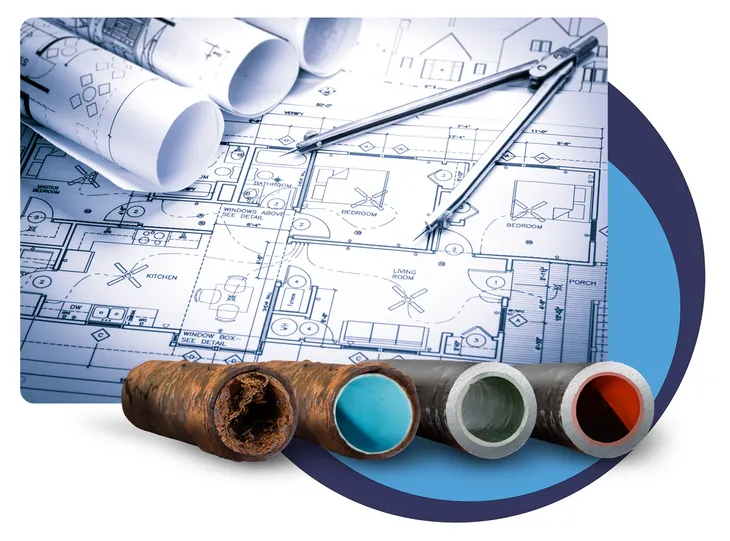
Efficiency and Convenience of Trenchless Methods
Trenchless methods stand out for their operational efficiency and convenience, enhancing their appeal beyond their landscape-friendly and cost-effective nature. These methods are characterized by their rapid execution, allowing repairs to be completed swiftly—often within a single day, depending on the scope of the work.
Take the Cured-in-Place Pipe (CIPP) technique as an example: it is notable for its quick turnaround, with the most time-intensive step being the curing of the liner. Technological advancements, such as UV light curing, have further accelerated this process.
From a customer’s standpoint, the convenience of trenchless repairs is unparalleled. Residents typically remain in their homes during repairs, and businesses can maintain operations with negligible interruption. The work is conducted underground, circumventing the need for large trenches or obstructive equipment that would otherwise encroach upon living or commercial spaces.
The compact nature of trenchless technology also contributes to its efficiency. The reduced need for large staging areas and material storage expedites project timelines and diminishes the logistical burden traditionally associated with pipe repairs.
Furthermore, trenchless methods are less likely to disrupt traffic and pedestrian access, an essential consideration in densely populated areas where even minor excavations can have significant repercussions on local commerce and traffic flow.
The execution of trenchless repairs is designed to navigate around existing utilities with minimal risk of damage or service interruptions. This precision is achieved through careful planning and the application of technologies like ground-penetrating radar to avoid existing infrastructure, thereby saving time and reducing hassle.
In essence, the sophistication of trenchless repair methods is masked by their apparent simplicity. They are straightforward to implement, require less manual labor, and offer high returns in terms of efficiency and convenience for communities, businesses, and municipalities, solidifying their status as a preferred method for pipe repair projects.
Adaptability to Various Environments
Trenchless no-dig pipe repair technology stands out for its remarkable versatility across different settings. This method transcends the limitations often encountered with traditional digging, offering flexible solutions that are easily tailored to a wide array of environmental conditions.
In the heart of bustling cities, trenchless techniques are particularly beneficial. They deftly maneuver around underground utilities and infrastructure with minimal surface disturbance, a stark contrast to conventional methods that could significantly disrupt urban life. This approach allows for essential repairs beneath busy streets and walkways without the usual chaos of excavation.
In contrast, when it comes to serene rural locales or ecologically sensitive areas, trenchless technology is equally adept. It ensures the integrity of natural habitats and landscapes, even allowing for repairs beneath rivers and through protected regions without the need for disruptive, and often damaging, excavation work.
The scalability of trenchless methods is another key feature, making them suitable for a broad spectrum of projects, from minor residential fixes to extensive municipal overhauls. For instance, pipe bursting can replace long stretches of pipeline, while Cured-in-Place Pipe (CIPP) lining offers a precise remedy for localized damage.
Trenchless technology also proves its worth in regions with harsh climates. Where freezing temperatures may cause the ground to heave and disrupt traditional excavation work, trenchless repairs proceed with fewer weather-induced setbacks, thanks to the absence of large open trenches.
Furthermore, the technology’s compatibility with various pipe materials, from PVC to metal, enhances its applicability. It can address pipes of differing diameters and conditions, which is particularly advantageous in older systems with a mix of pipe sizes and materials.
In areas with unstable geological conditions, the resilience of trenchless materials, like the flexible CIPP liners, provides an additional layer of security. These materials are designed to withstand shifts in the earth, ensuring a durable repair that stands the test of time.
Overall, the ability of trenchless no-dig repair technology to adapt to an assortment of environmental and infrastructural challenges solidifies its role as a leading-edge solution in the field of modern pipe maintenance and renewal.
Dispelling Common Myths About Trenchless Technology
Despite its growing popularity, trenchless technology is sometimes shrouded in misconceptions that warrant clarification. Addressing these myths is essential to foster a deeper understanding and acceptance of this innovative approach.
Contrary to the belief that trenchless methods are only apt for minor repairs, they are indeed capable of tackling extensive infrastructure projects with techniques like pipe bursting and slip lining, demonstrating their broad applicability.
Another myth posits that trenchless repairs serve merely as a stopgap. In reality, the materials utilized, such as CIPP liners and robust epoxy resins, are designed to fortify pipes for the long haul, often accompanied by warranties spanning decades.
The assumption that trenchless solutions are exorbitantly priced also misses the mark. While upfront costs may be higher in some cases, the overall financial benefits become apparent when considering the reduced need for labor, shorter project timelines, and the avoidance of landscape restoration costs.
Environmental concerns also give rise to myths, with some suggesting that trenchless repairs are detrimental to the ecosystem. On the contrary, this method significantly reduces the environmental footprint by limiting soil disruption and preserving the surrounding flora and fauna.
Skepticism about the technology’s ability to address severe or complex pipe damage is unfounded as well. Trenchless technology has evolved to confront a variety of challenges, including substantial pipe collapses, with innovative solutions that ensure effective repairs.
Lastly, the durability and reliability of trenchless repairs are sometimes underestimated. These methods often result in reinforced pipes that match or surpass the strength of new ones, with the added advantage of being less prone to issues like root intrusion and corrosion.
In dispelling these myths, the true capabilities and advantages of trenchless technology come to light, underscoring its role as a sustainable, cost-effective, and reliable option for modern infrastructure maintenance.
1. What is trenchless no-dig pipeline repair?
Trenchless no-dig pipeline repair refers to innovative methods used for fixing underground pipes without resorting to extensive digging that disrupts landscapes. Cured-in-place pipe (CIPP) and pull-in-place pipe (PIP) serve as two common techniques.
2. How does trenchless no-dig repair minimize landscape disturbance?
Trenchless no-dig repair requires only small access points, which reduce the need for extensive digging. This approach conserves the integrity and aesthetics of surrounding landscapes, preventing the need for landscape restoration post-repair.
3. Do all pipes qualify for trenchless no-dig repairs?
Not all pipes qualify. Pipe condition, material, and size can determine the suitability. Inspection by a professional contractor will help determine whether the pipes are suitable for trenchless no-dig repairs.
4. Is trenchless no-dig repair more beneficial than traditional pipe repair methods?
Yes, trenchless no-dig repair is typically more advantageous. It saves time, energy, and money by minimizing disruption to landscapes. Additionally, the introduced pipes are durable and long-lasting, extending their lifespan.
5. Are trenchless no-dig methods applicable to all types of pipelines?
Trenchless no-dig methods broadly apply in sewer, water, gas, and chemical pipelines. Their flexibility allows repair of different pipes made from various materials like clay, concrete, metal, and plastic.
6. Does trenchless no-dig repair affect the functionality of the repaired pipe?
No, trenchless no-dig repair maintains or even improves the functionality of repaired pipes. The new lining created within the existing pipe forms a smooth, seamless pipe within a pipe, enhancing its flow efficiency.

